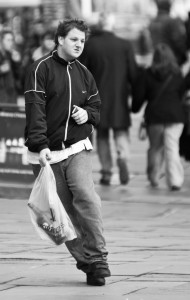The Perils of Drunk Walking (Ep. 55)
[omny:https://traffic.omny.fm/d/clips/aaea4e69-af51-495e-afc9-a9760146922b/14a43378-edb2-49be-8511-ab0d000a7030/e5ef9a05-91f4-46b5-9933-ab0d001c39c5/audio.mp3]
In our latest Freakonomics Radio on Marketplace podcast, Stephen Dubner looks at why the first decision you make in 2012 can be riskier than you think. (Download/subscribe at iTunes, get the RSS feed, listen via the media player above, or read the transcript.)
The risks of driving drunk are well-established; it’s an incredibly dangerous thing to do, and produces massive collateral damage as well. So if you have a bit too much to drink over the holiday and think you’ll do the smart thing and walk home instead — well, that’s not so smart after all. Steve Levitt has compared the risk of drunk walking with drunk driving and found that the former can potentially pose a greater risk:
LEVITT: For every mile walked drunk, turns out to be eight times more dangerous than the mile driven drunk. To put it simply, if you need to walk a mile from a party to your home, you’re eight times more likely to die doing that than if you jump behind the wheel and drive your car that same mile.
Levitt is not advocating that people drive drunk instead — but rather that we look harder at the numbers behind drunk walking. In 2009, the most recent year for which we have data, about 34,000 people died in traffic accidents. Roughly half of them were drivers — 41 percent of whom were drunk. There were more than 4,000 pedestrians killed — and 35 percent of them were drunk. Of course, a drunk walker can’t hurt or kill someone else the way a drunk driver can, and people drive drunk much farther distances than they’d walk drunk. But the danger is hardly insignificant, says trauma surgeon Thomas Esposito. His hospital, Loyola University Health System, outside of Chicago, consistently sees a spike in patients who have been struck by cars during this time of year:
ESPOSITO: I’d rather work New Year’s Eve than New Year’s Day. Because a lot of the time on New Year’s Day, that’s when people start to realize someone’s missing, where are they? And then they find them on the bottom of the stairs or the side of the road, injured.
This annual spike at Loyola mirrors nationwide trends. A report by the journal Injury Prevention found that January 1 is the deadliest day for pedestrians.
Here’s where you can listen to Marketplace on a station near you.


Comments